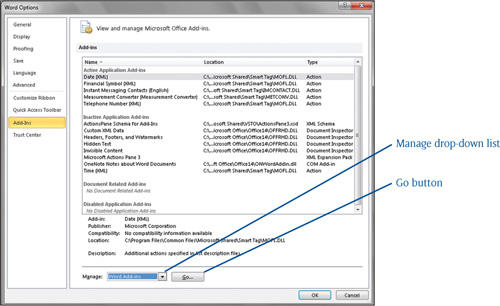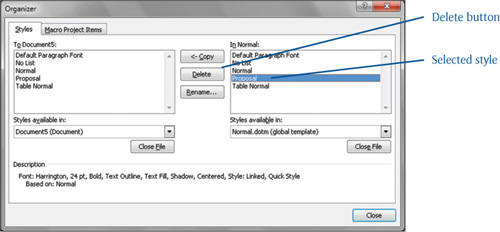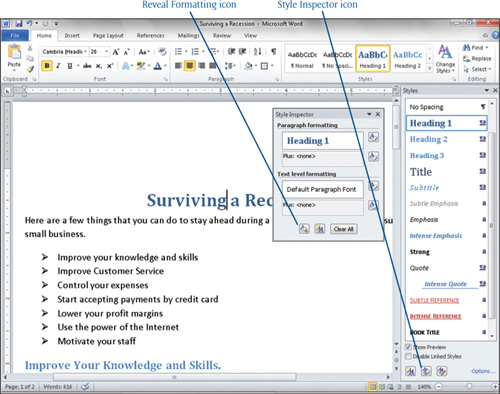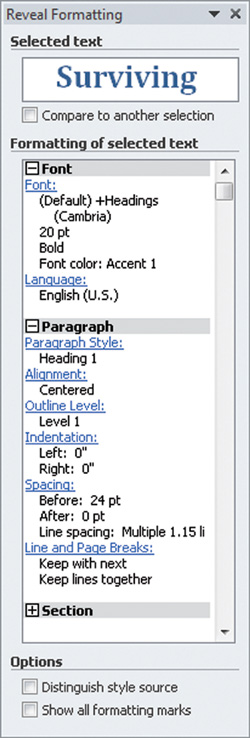Deleting Styles
In the previous section, you worked with the Manage
Styles dialog box where you discovered how you can modify a style. You
may have noticed a Delete button on the Manage Styles dialog. If you
click the Delete button, you are only temporarily deleting the style—not
permanently.
If you want to permanently delete a customized style,
you must do so through the Style Organizer window. For whatever the
reason, Microsoft made the Style Organizer window a little difficult to
get to, but the following steps show you the way:
Click the File tab and choose Options. The Word Options dialog box appears.
On the left side, choose Add-Ins. The right side displays options related to Add-Ins.
Click the Manage drop-down list and choose Word Add-ins. See Figure 8.

Click the Go button. The Templates and Add-Ins dialog box appears.
Click the Organizer button located in the lower-left corner. The Organizer dialog box appears, as shown in Figure 9.

From the right column (In Normal:) select the style you want to delete.
Click the Delete button. A confirmation box appears.
Click Yes, and then when you are finished, click the Close button.
Revealing Formatting
Word
has a really cool feature that lets you quickly see all formatting
applied to selected text. Called Reveal Formatting, you can review the
font formatting, paragraph formatting, and section formatting all at
once.
To see the text formatting, first select the text you
want to inspect, then open the Style task pane by clicking the Home
> Styles Dialog Box Launcher.
From the bottom of the Styles task pane, click the
Style Inspector icon, which is the middle icon. The Style Inspector pane
shown in Figure 10 appears.

From the bottom of the Style Inspector pane, click
the Reveal Formatting icon (the one on the left). The Reveal Formatting
pane appears on the right side of your Word window. See Figure 11. From here you can see all formatting applied to the selected text.

If you want to change any of the options, click the
applicable underlined link. A dialog box relative to that option appears
where you can change the settings for the selected text.
When you are finished, click the Close box (x) on the
Reveal Formatting task pane, the Styles task pane, and the Style
Inspector task pane.
